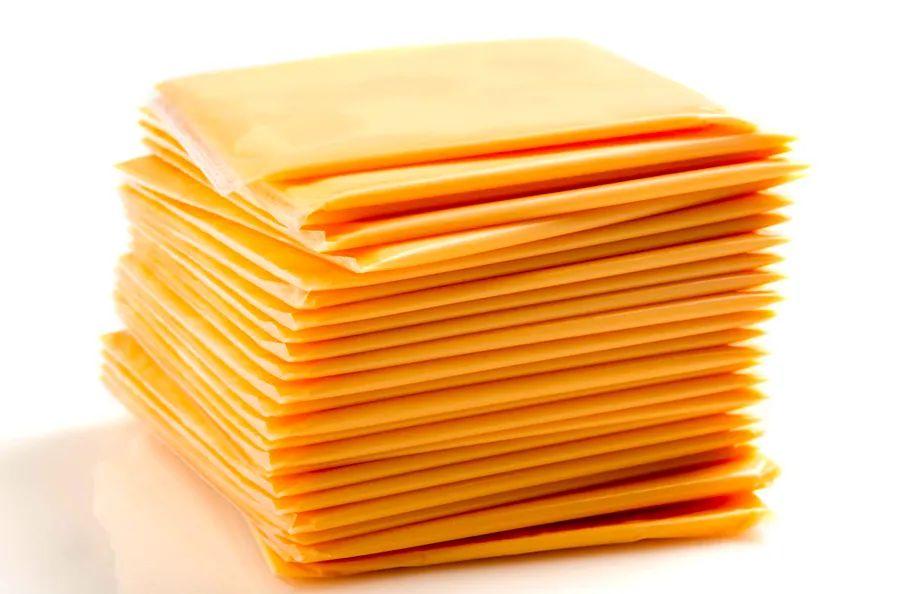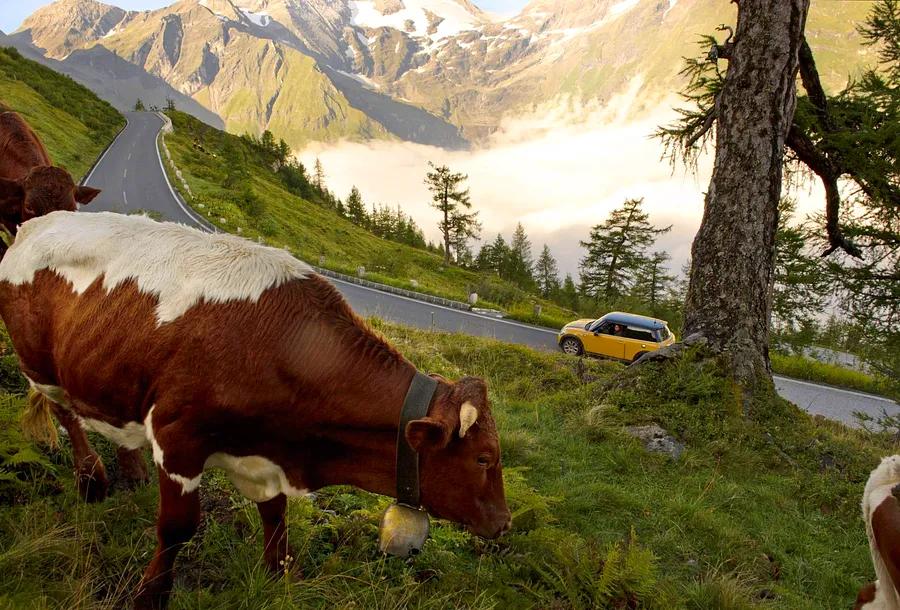The Origins of American Cheese: Is It Really Cheese?

American cheese holds a prominent place in the American diet, but it’s not for everyone. Fans swear by its smooth, salty flavor, perfect for grilled cheese sandwiches, burgers, and deli favorites. On the other hand, cheese aficionados often scoff at American cheese, associating it with processed slices like Kraft singles—an overly artificial substance that many don't consider to be real cheese.
Regardless of where you stand on the American cheese debate, chances are you don’t know the full story behind it. This dairy product's definition has evolved over time, shaped by technological advances in cheese-making. Let’s dive into the fascinating journey of American cheese.
The term 'American cheese' used to be a more straightforward concept.
Long before mass production and processing, 'American cheese' simply meant cheese that came from the United States.
Since the 1620s, Plymouth colonists had been crafting their own cheddar, a cheese that gets its name from a village in England. By the late 1700s, America was sending cheddar back to England, where people began calling it "Yankee" or "American" cheese, a term reflecting its origins across the Atlantic. The imported version was often cheaper than locally produced cheddar, earning a reputation as the cheese of the common folk rather than the British elite. (Perhaps a lingering reminder of the Revolutionary War?)
However, the American cheese we recognize today actually has its roots in Switzerland.
While 'American cheese' was more of a term than a trademark for much of the 18th and 19th centuries, it would eventually become the distinct product we know today. The transformation began in Switzerland in 1911, when Walter Gerber and Fritz Stettler created the world’s first processed cheese by melting shredded Emmentaler cheese with sodium citrate, resulting in a smooth, firm substance once cooled.
This innovation in longer-lasting cheese products paved the way for James Lewis Kraft, a Canadian-born former grocery clerk turned cheese wholesaler. While living in a Chicago boardinghouse, Kraft experimented with his own methods, eventually patenting a process that involved melting various cheddar pieces together at 175 degrees for 15 minutes. The result? A cheese that could stay fresh longer and be packaged in cans or jars, according to the New York Times.
In 1921, Kraft made another breakthrough, patenting a 2.27-kilogram "loaf" of processed cheese, which delis could easily slice and sell in bulk. This move helped popularize processed cheese and set the stage for what we now know as "American cheese." The creation of Kraft Singles in 1965 further cemented the product’s place in American culture. Interestingly, James Kraft's brother, Norman, had a hand in this innovation by using a frozen rolling pin on freshly processed cheese years before.

Strictly speaking, American cheese isn’t really cheese.
That’s because blended cheeses must be labeled as "processed cheese" or "cheese product." According to Cheese.com, the U.S. Code of Federal Regulations classifies American cheese as a type of "pasteurized processed cheese." Legally, what we call American cheese is described as "a stable mixture of natural cheese bits combined with emulsifying agents" that forms a "homogeneous plastic mass." This definition was influenced by the natural cheese industry, which wanted to distinguish itself from companies like Kraft. While the word "plastic" sounds unnerving, it simply refers to the cheese's ability to be shaped or molded—something many cheeses can do.
Believe it or not, "plastic" isn’t even the worst term American cheese could have gotten. Kraft’s processed cheese irked natural cheese makers so much that they lobbied regulators to label it "embalmed cheese." Why? Because sodium phosphate, the emulsifier used to keep the fat from separating, was also used in embalming corpses. Thankfully, the government opted for the less ominous "plastic" instead.
The Three Main Varieties of American Cheese
Because there are various methods for making processed cheese, American cheese can fit into a few broad categories, each with its own definition.
For standard deli-sliced American cheese, this falls under the category of "pasteurized process cheese." This means it’s made by melting at least one kind of real cheese, such as cheddar or Colby, and typically adding ingredients like water, salt, spices, coloring, or cream to enhance flavor, texture, or appearance. Emulsifying agents (like sodium phosphate or potassium citrate) are used to keep everything mixed together. While the exact ingredients can vary, the cheese must have a moisture content of less than 43% and a fat content of at least 47%.
Kraft Singles, on the other hand, are classified as "pasteurized process cheese food." These have a bit more flexibility in terms of ingredients, but they must contain at least 23% fat and no more than 44% moisture. Importantly, at least 51% of the product must be real cheese.
Then there’s "pasteurized process cheese spread," which includes popular brands like Velveeta and Cheez Whiz—essentially the go-to examples of processed cheese. These spreads must contain at least 51% cheese, 20% milkfat, and moisture between 44% and 60%. Interestingly, they must also be spreadable at room temperature.
American cheese is whatever you make of it.
Now that you’re familiar with the history, evolution, and nature of American cheese, you can call yourself a true connoisseur. At the very least, you’ll be able to impress (or annoy) your friends by presenting American cheese as if it’s a rare delicacy from some obscure corner of France the next time you gather around a charcuterie board.
Evaluation :
5/5



